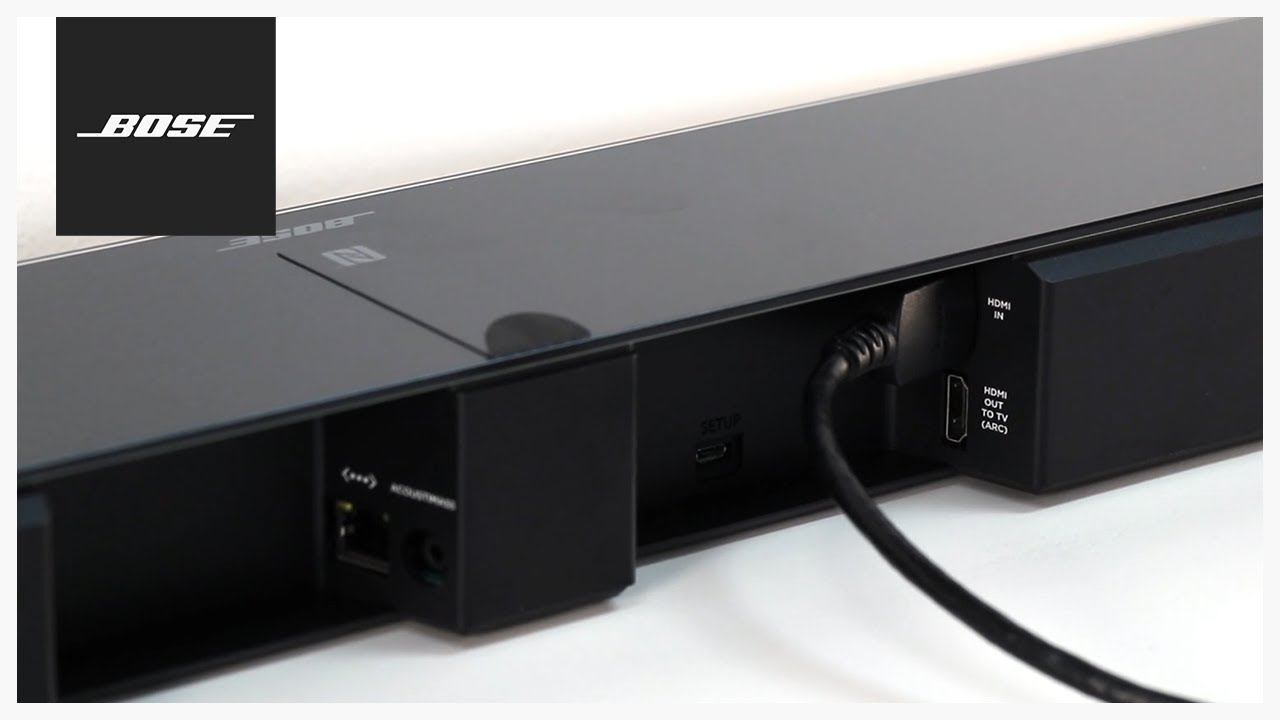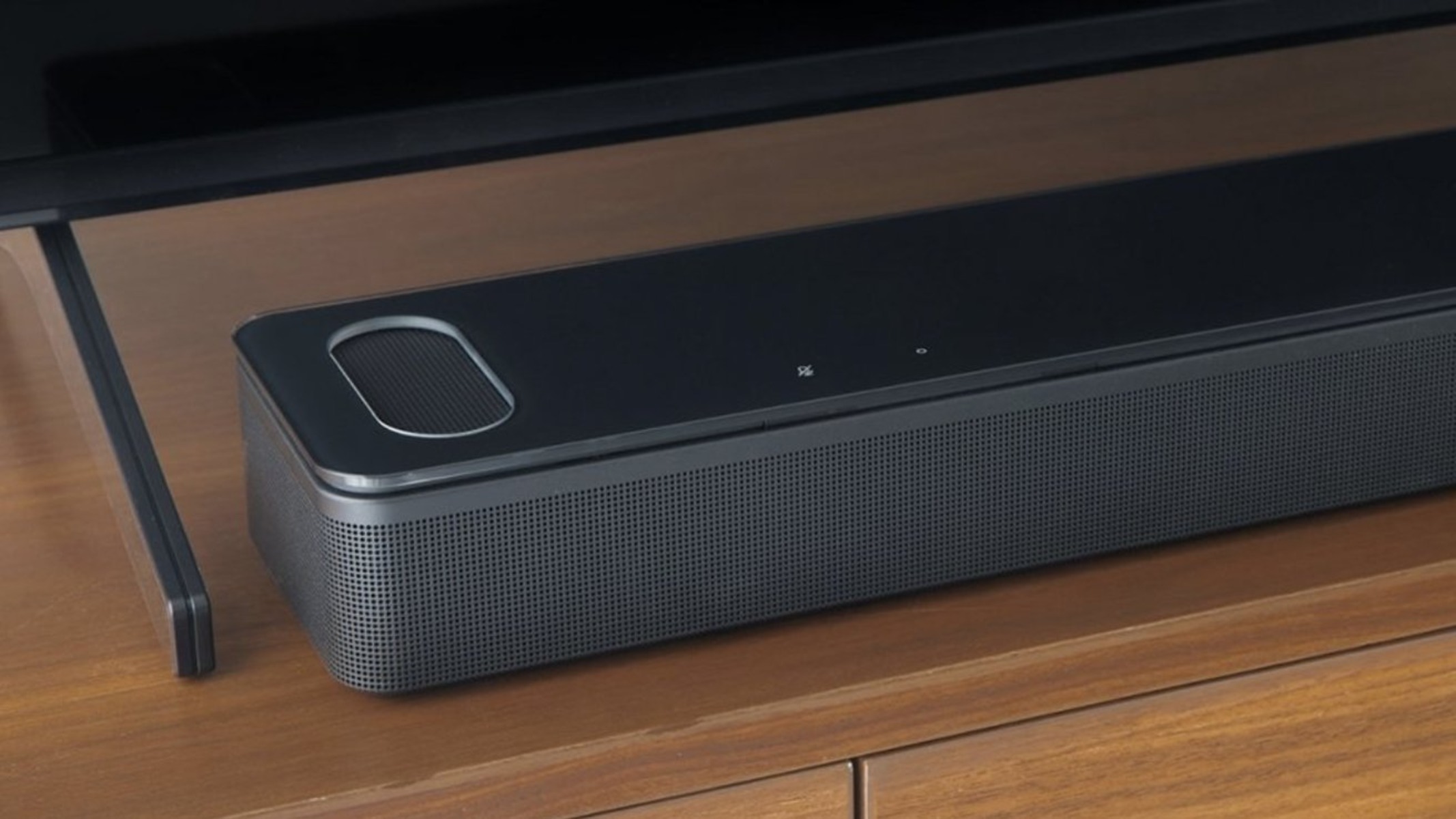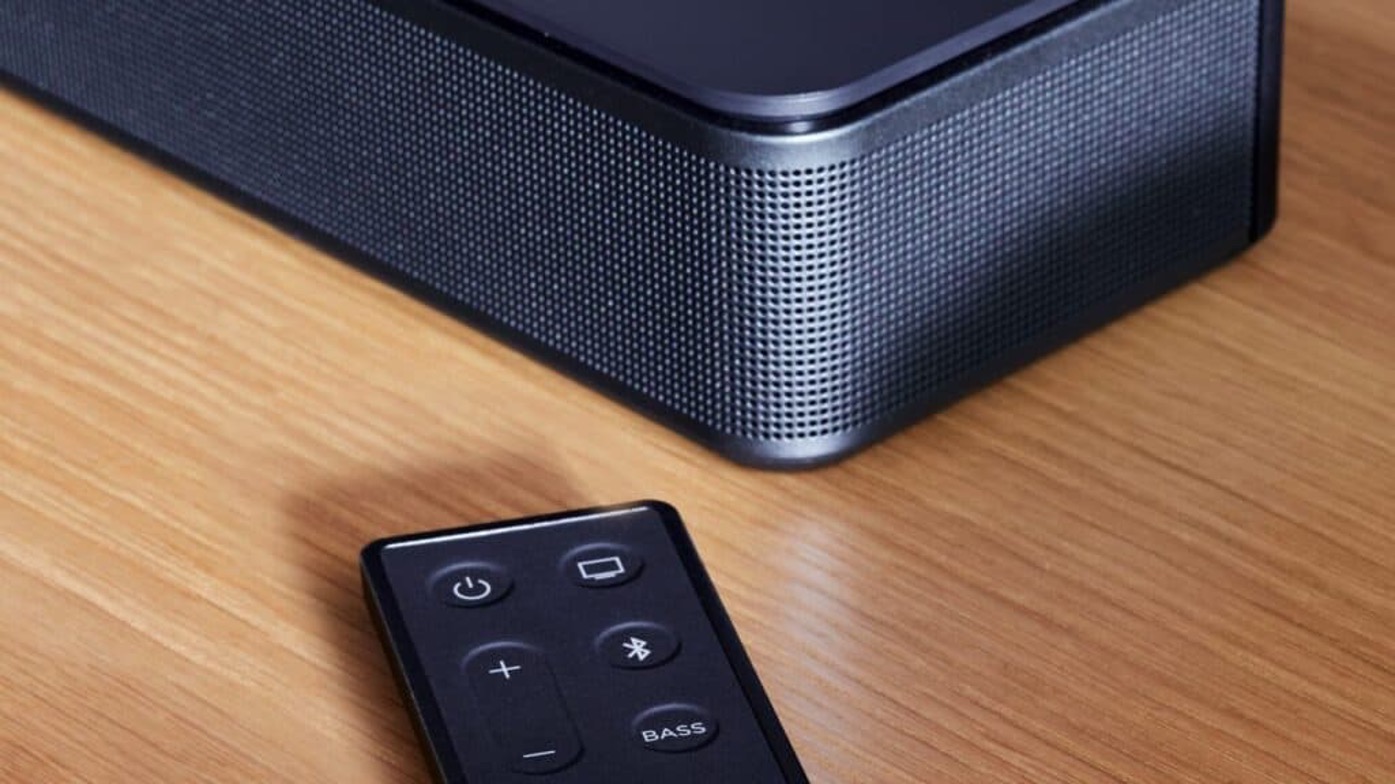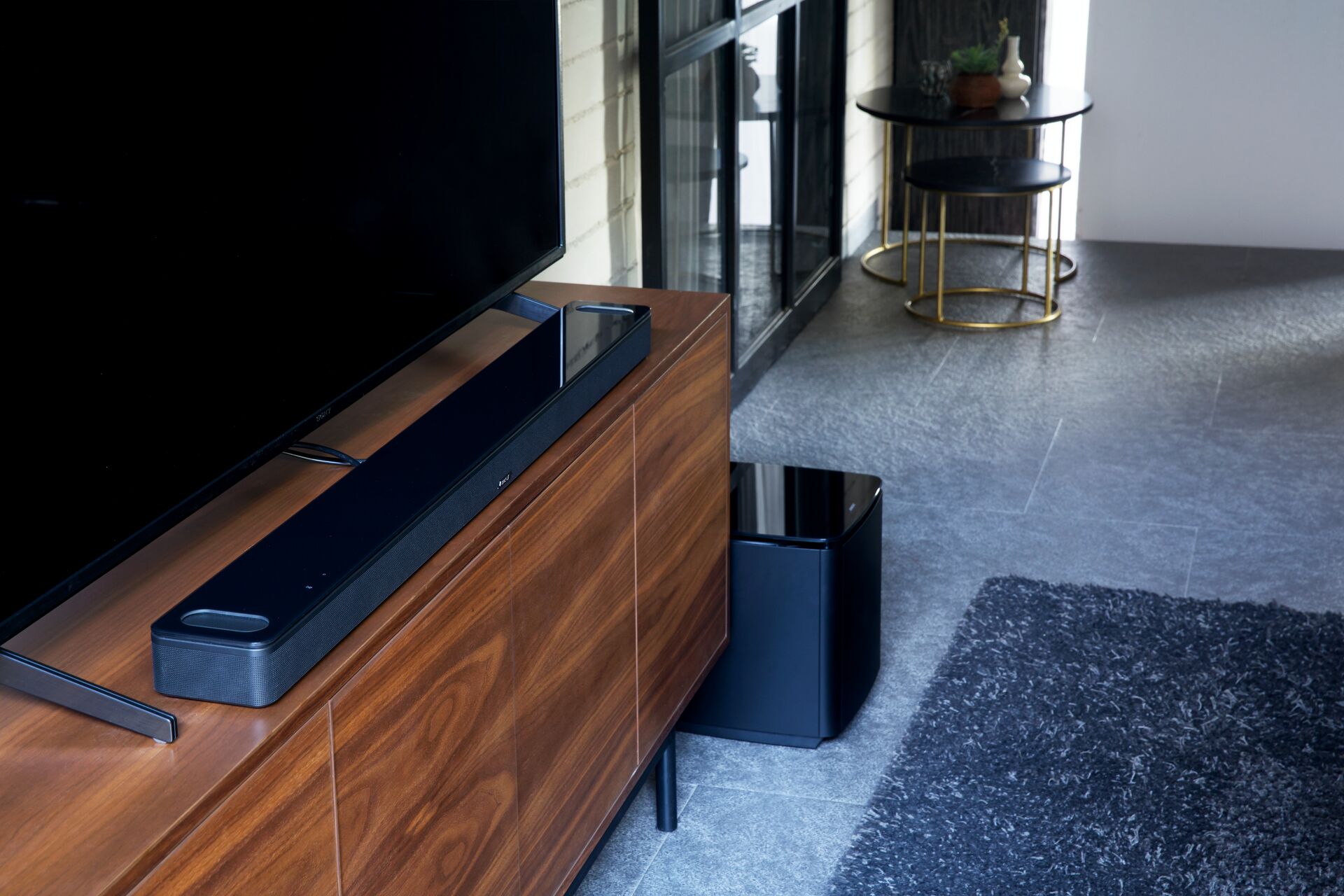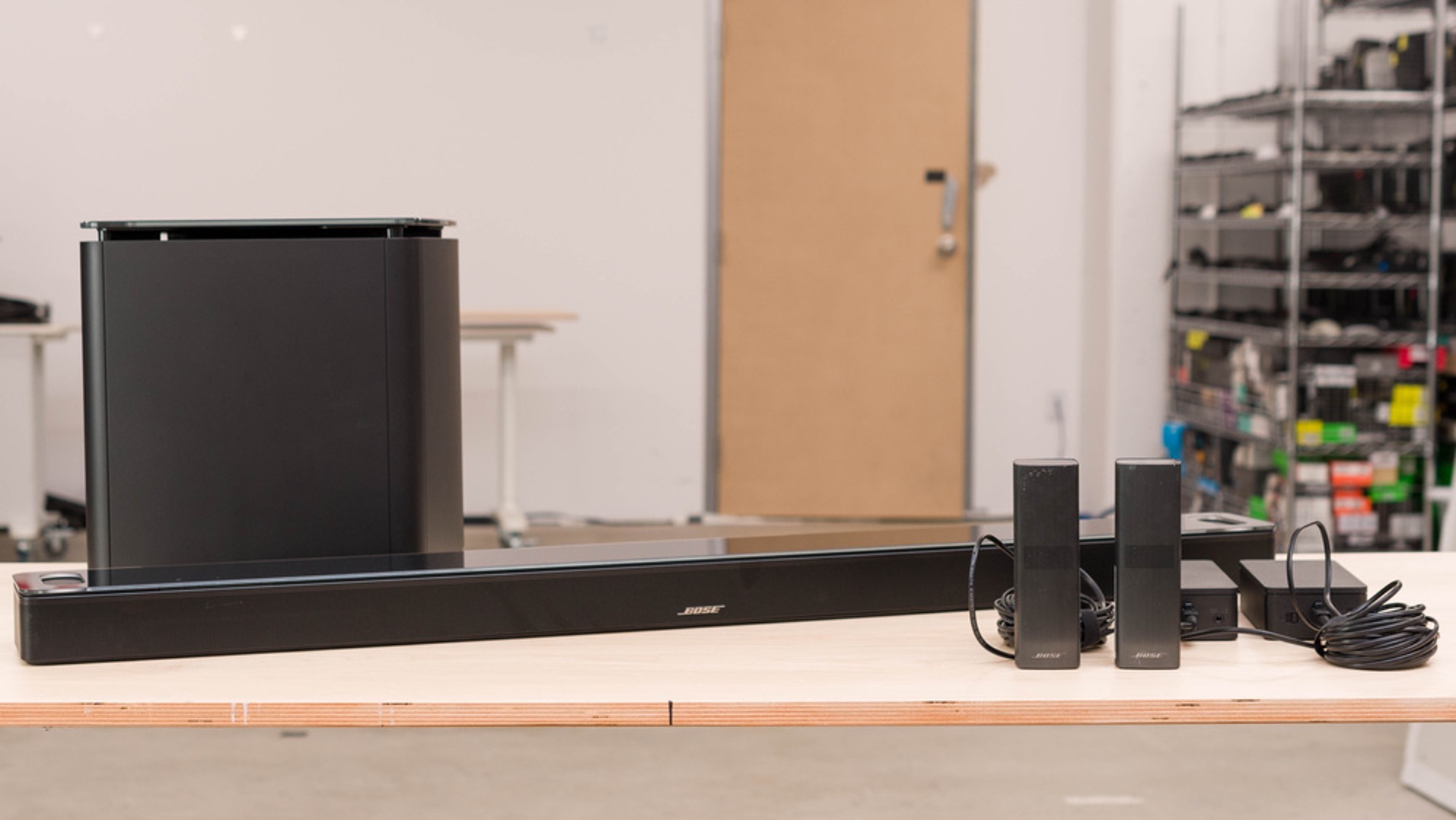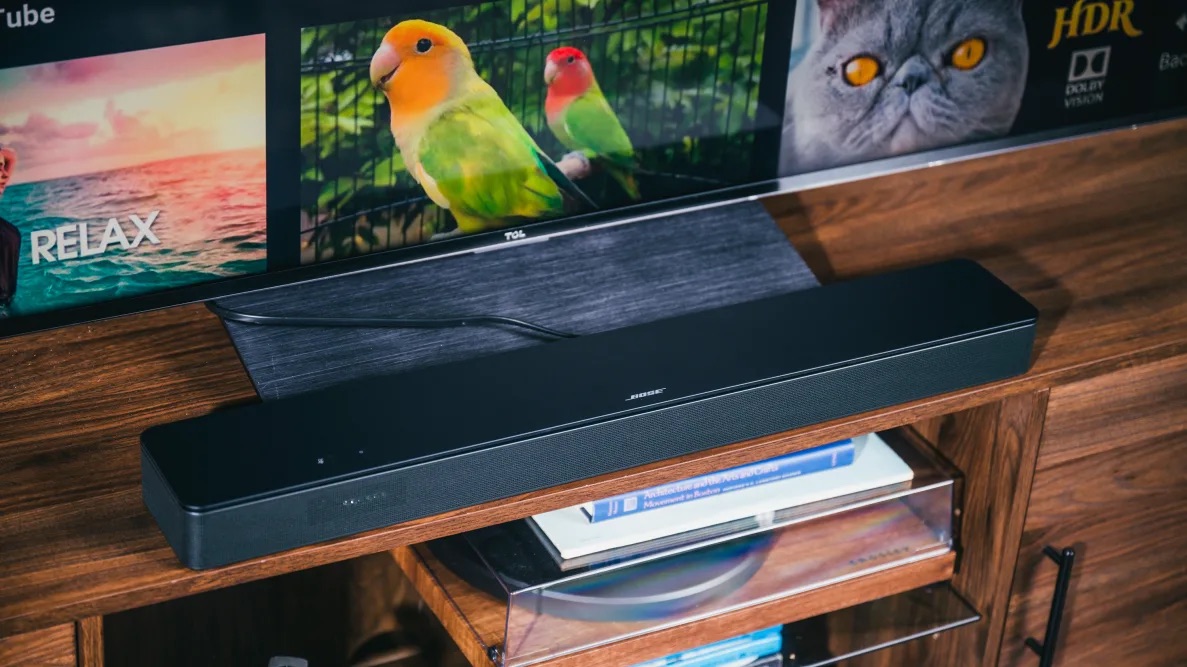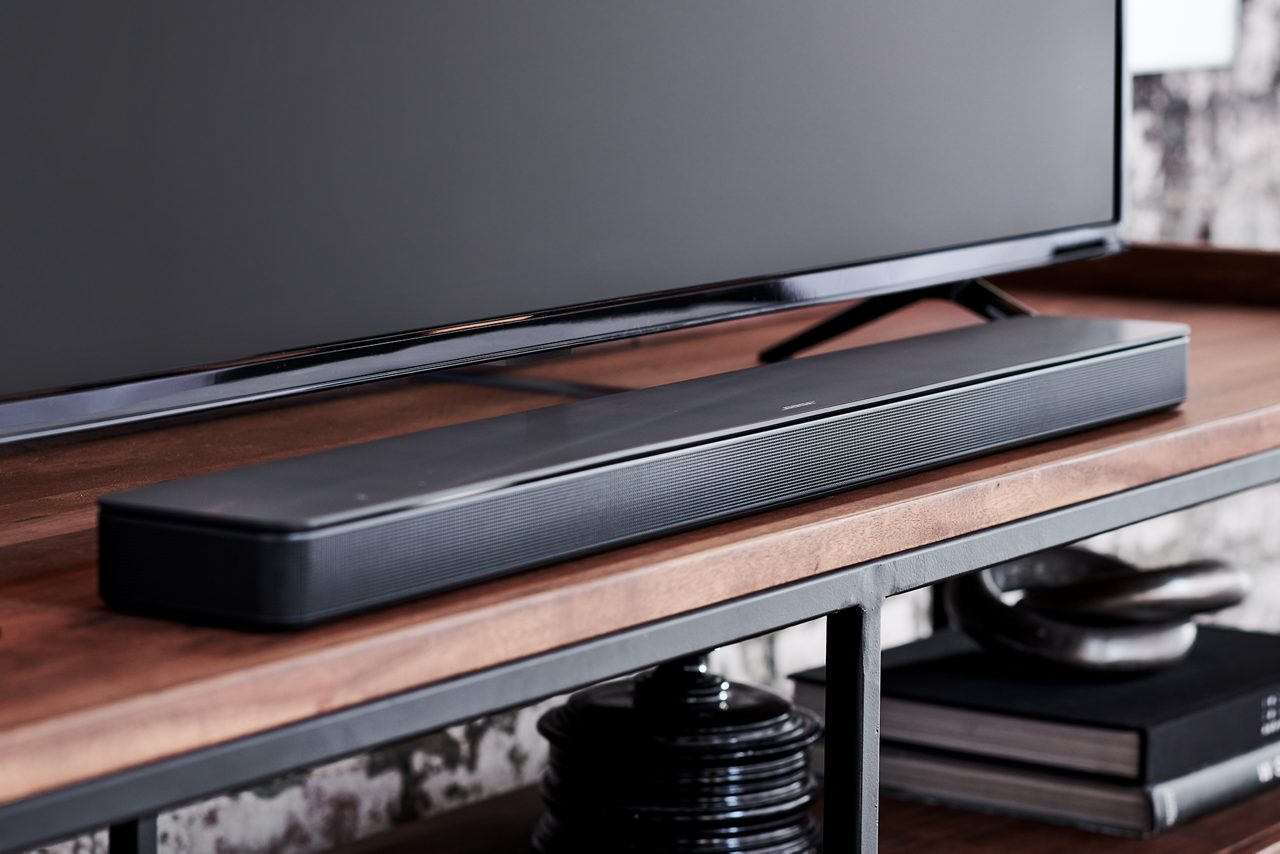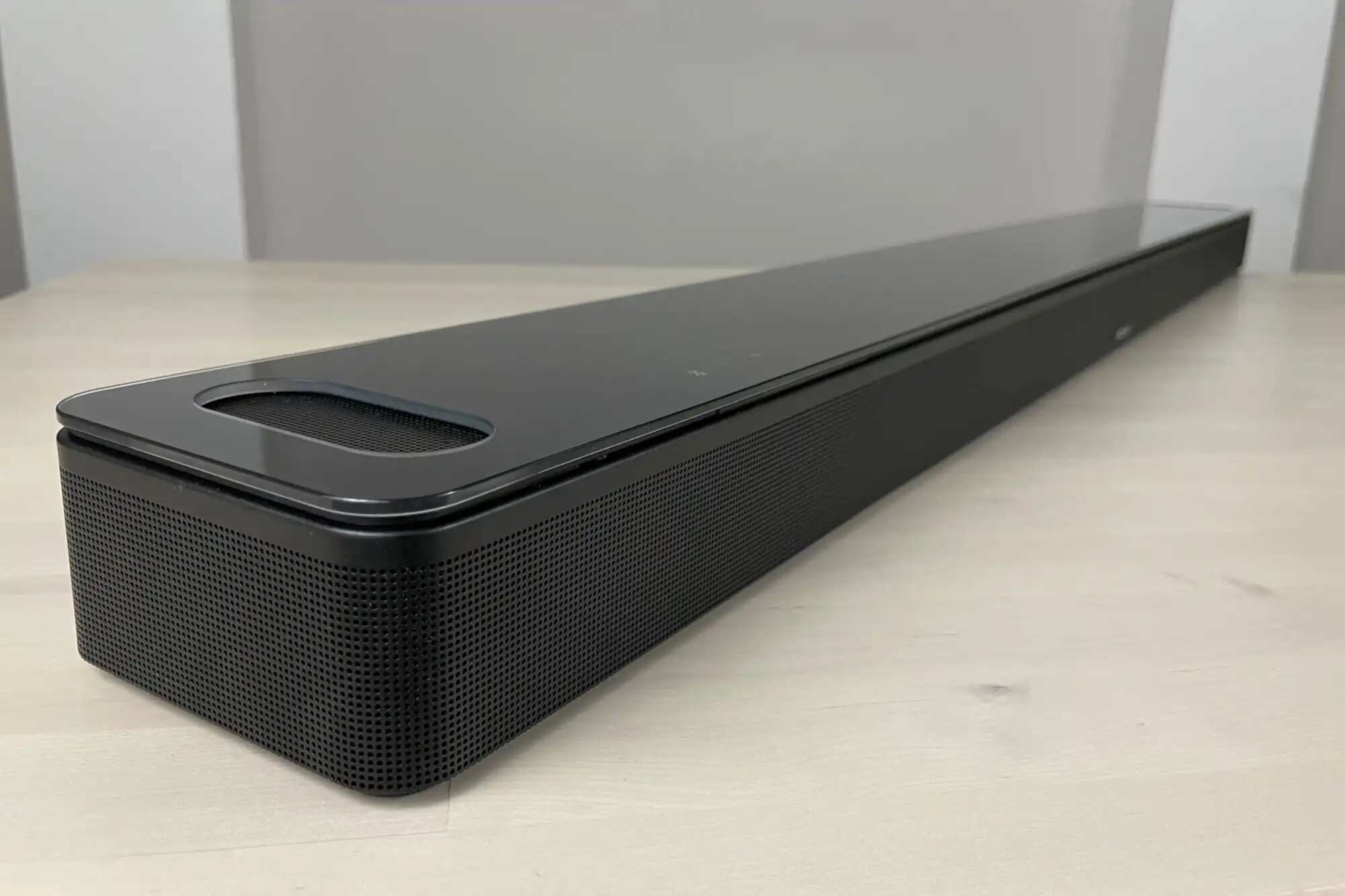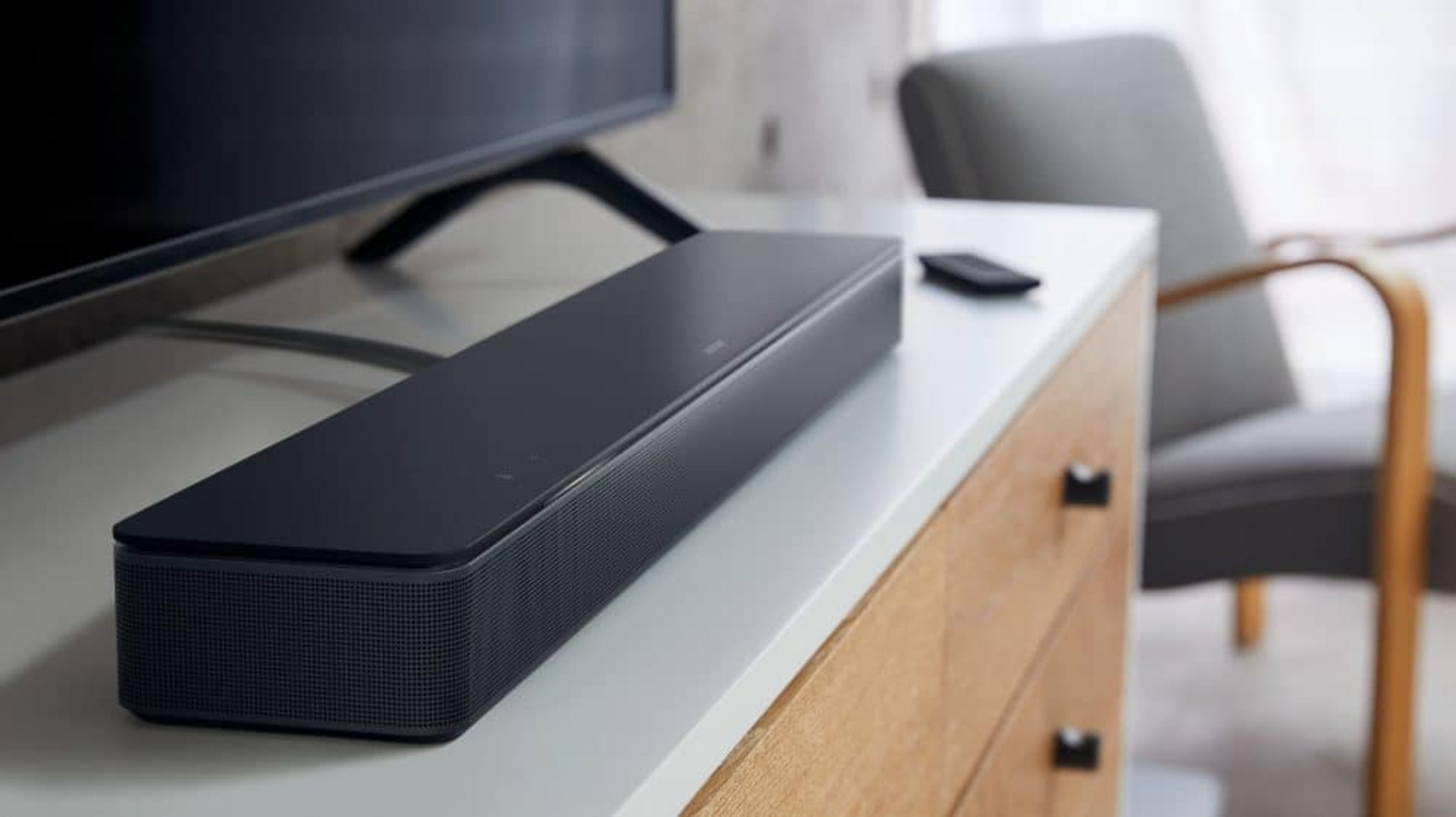Introduction
Welcome to our guide on how to connect a Bose Soundbar to your TV. With the advancement of home entertainment systems, having a soundbar has become a popular choice to enhance the audio experience when watching movies, shows, or playing games.
Bose is renowned for its high-quality sound systems, and their soundbars are no exception. Whether you own a Bose Soundbar 500, Soundbar 700, or any other model, connecting it to your TV is a straightforward process that can greatly improve the audio quality and immerse you in a more cinematic experience.
By connecting your Bose Soundbar to your TV, you can amplify the sound, enjoy clearer dialogue, and feel the deep bass that enriches your audio experience. Whether you’re a movie lover, sports enthusiast, or gamer, connecting a soundbar can take your entertainment to the next level.
In this guide, we will walk you through the step-by-step process of connecting your Bose Soundbar to your TV. We will cover the required cables and accessories, locating the audio output ports on your TV, connecting the soundbar to the TV using HDMI or optical cable, adjusting the TV settings for sound output, and how to troubleshoot common issues that may arise.
Keep in mind that the specific steps and available ports may vary depending on your specific TV model and Bose Soundbar, so it’s important to consult the user manuals for both your TV and soundbar. However, this guide will provide you with a general overview and serve as a helpful starting point for the setup process.
So let’s get started and learn how to connect your Bose Soundbar to your TV, creating a more immersive and satisfying audio experience for all your entertainment needs.
Step 1: Check compatibility
Before you begin connecting your Bose Soundbar to your TV, it’s crucial to ensure that both devices are compatible with each other. This will help avoid any potential compatibility issues and ensure a seamless connection.
Firstly, check the compatibility of your soundbar model with your TV. Refer to the user manual or the manufacturer’s website of both devices to determine if they are compatible. Look for information regarding the audio output capabilities of your TV and the supported input options of your soundbar. This will help you identify the appropriate connection method between the two devices.
Secondly, consider the audio formats and features that your soundbar supports. Some soundbars are equipped with advanced features like Dolby Atmos, DTS:X, or virtual surround sound. Ensure that your TV is capable of outputting these audio formats or that your soundbar can downmix them to a compatible format supported by your TV.
If your TV has HDMI ARC (Audio Return Channel) support, it simplifies the connection process and allows for audio to be transmitted from the TV to the soundbar through a single HDMI cable. This eliminates the need for additional cables and ensures a direct and high-quality audio connection between the TV and soundbar.
Alternatively, if your TV does not have HDMI ARC, check if it has an optical audio output. Soundbars often have an optical input that can be used to connect to the TV. Ensure that both the TV and soundbar have the required optical ports for this connection.
By confirming the compatibility between your TV and soundbar, you can proceed confidently with the setup process, knowing that your devices are suitable for establishing a successful audio connection. Now that you have verified the compatibility, it’s time to gather the necessary cables and accessories for the connection.
Step 2: Gather necessary cables and accessories
Before you begin connecting your Bose Soundbar to your TV, it’s important to gather all the necessary cables and accessories that you will need for the setup process. Having everything ready will help ensure a smooth and hassle-free connection.
Here are the common cables and accessories you may need:
- HDMI cable: If your TV and soundbar have HDMI ARC support, you will need an HDMI cable. Look for a high-speed HDMI cable that supports the latest standards, such as HDMI 2.0 or HDMI 2.1, to ensure optimal audio and video transmission.
- Optical cable: If your TV and soundbar have optical audio ports, you will need an optical cable. Make sure to choose a high-quality optical cable to ensure a reliable and clear audio signal.
- Power cables: Ensure that you have the necessary power cables for both the TV and soundbar. Check if your soundbar requires a separate power adapter or if it can be powered directly from the TV via the HDMI or optical connection.
- Batteries: If your soundbar remote control requires batteries, make sure to have them handy. Check the user manual to see what type and how many batteries are required.
- User manuals: Keep the user manuals of both your TV and soundbar easily accessible. These manuals will provide you with specific instructions and troubleshooting tips for your particular models.
It’s recommended to use high-quality cables and accessories to ensure optimal performance and longevity. Look for reputable brands and read customer reviews to make informed choices when purchasing these items.
Once you have gathered all the necessary cables and accessories, you are ready to proceed with the connection process. In the next step, we will guide you in locating the audio output ports on your TV.
Step 3: Locate the audio output ports on your TV
Before you can connect your Bose Soundbar to your TV, you need to locate the audio output ports on your TV. These ports allow you to transmit the audio signal from your TV to the soundbar.
The location and types of audio output ports can vary depending on your TV model. Here are the most common types of audio output ports:
- HDMI ARC (Audio Return Channel) port: If your TV has HDMI ARC support, look for the HDMI ARC port. It is usually labeled as “ARC” or “HDMI ARC” and is typically found on the back or side of the TV. This port simplifies the connection process by transmitting both audio and video signals through a single HDMI cable.
- Optical audio output port: If your TV doesn’t have HDMI ARC but has an optical audio output, locate the optical audio output port. It is usually labeled as “Optical,” “Digital Audio Out,” or “TOSLINK.” The port may be covered with a protective cap that needs to be removed before connecting the optical cable.
- 3.5mm audio output port: Some older TVs may have a 3.5mm audio output port. It is a small round port that resembles a headphone jack. If your TV has this port, you can use a 3.5mm-to-RCA adapter to connect the soundbar.
- RCA audio output ports: Another older audio output option found on some TVs is the RCA ports. They are color-coded as red and white and may be labeled as “Audio Out” or “RCA Out.” If your TV has these ports, you can use an RCA-to-3.5mm adapter or RCA cables to connect to the soundbar.
Refer to your TV’s user manual or consult the manufacturer’s website to get specific information about the location and type of audio output ports on your TV.
After locating the appropriate audio output port on your TV, you are one step closer to connecting your Bose Soundbar. In the next step, we will guide you through the process of connecting the soundbar to your TV via HDMI or optical cable.
Step 4: Connect the soundbar to the TV via HDMI or optical cable
Now that you have located the audio output ports on your TV, it’s time to connect your Bose Soundbar to the TV. The connection method will depend on the available ports on both your TV and soundbar.
Connecting via HDMI:
- Ensure that your TV and soundbar support HDMI ARC (Audio Return Channel). This allows for both audio and video signals to be transmitted through a single HDMI cable.
- Connect one end of the HDMI cable to the HDMI ARC port on your TV.
- Connect the other end of the HDMI cable to the HDMI ARC input on your soundbar.
- Power on both your TV and soundbar. The TV should recognize the soundbar and automatically switch the audio output to the soundbar.
Connecting via optical cable:
- If your TV has an optical audio output, take the optical cable and connect one end to the optical audio output port on your TV.
- Connect the other end of the optical cable to the optical input port on your soundbar.
- Ensure that the cable is securely plugged in on both the TV and soundbar.
- Power on your TV and soundbar, and make sure to select the optical input as the audio source on your soundbar.
After connecting your Bose Soundbar to your TV using either an HDMI or optical cable, you are ready to proceed to the next step. We will guide you through adjusting the TV settings for sound output.
Step 5: Adjust the TV settings for sound output
After connecting your Bose Soundbar to your TV, it’s important to adjust the TV settings to ensure the proper audio output is directed to the soundbar. By making these adjustments, you can optimize the audio performance and ensure that you’re getting the best sound quality.
Here’s how you can adjust the TV settings for sound output:
- Access the TV’s settings menu. This can usually be done by pressing the “Menu” button on your TV remote control.
- Navigate to the audio settings section. The location and naming of this section may vary depending on your TV model, but it’s typically labeled as “Audio,” “Sound,” or “Sound Settings.”
- Look for the audio output or audio format settings. You may find options like “Audio Output,” “Audio Output Mode,” or “Digital Audio Out.”
- Select the appropriate audio output option that corresponds to the connection you have made. If you connected via HDMI ARC, choose the HDMI ARC setting. If you connected via optical cable, select the optical output option.
- Adjust any additional sound settings according to your preferences. This may include options such as sound modes, equalizer settings, or virtual surround sound.
- Save the changes and exit the settings menu. Your TV is now configured to output the audio to your Bose Soundbar.
It’s worth noting that some TVs may automatically detect the soundbar and adjust the audio settings accordingly. In such cases, you may not need to manually adjust the settings. However, it’s always a good idea to double-check and make any necessary adjustments to ensure optimal sound output.
Now that you have adjusted the TV settings for sound output, you can proceed to the next step and power on your soundbar to test the connection.
Step 6: Power on the soundbar and test the connection
After connecting your Bose Soundbar to your TV and adjusting the TV settings, it’s time to power on the soundbar and test the connection. Following this step will allow you to ensure that the audio is being properly transmitted from your TV to the soundbar.
Here’s what you need to do:
- Make sure that both your TV and soundbar are powered on.
- Switch your TV to a source that provides audio, such as a TV show, movie, or music.
- Depending on the soundbar model, you might need to use the soundbar remote control or the buttons on the soundbar itself to select the input source. Choose the input option that corresponds to the connection you made (e.g., HDMI ARC or optical).
- Start playing the audio content on your TV and listen for the sound coming from the soundbar. Ensure that the volume is audible and clear.
- If you hear sound coming from both the TV speakers and the soundbar, you may need to disable the TV speakers by going into the TV’s audio settings and selecting “External Speakers” or “Audio Output: Soundbar.”
- Also, make sure to check that the soundbar is properly placed and has a clear line of sight to the seating area for the best sound experience.
If you can hear the audio playing only through the soundbar and it sounds clear and immersive, congratulations – your Bose Soundbar is successfully connected to your TV. Make any necessary adjustments to the volume levels on your soundbar and TV to achieve your desired audio experience.
If you encounter any issues during this step, refer to the troubleshooting section of your soundbar and TV user manuals for assistance. In the next section, we will provide some common troubleshooting tips for easily fixing connectivity problems.
Troubleshooting common issues
While connecting your Bose Soundbar to your TV is usually a straightforward process, you may encounter some common issues along the way. This troubleshooting section will help you identify and resolve these issues, ensuring a successful connection and optimal audio performance.
No sound or poor audio quality:
- Check that all cables are securely connected to both the TV and soundbar. Loose or improperly connected cables can result in no sound or distorted audio.
- Ensure that the TV and soundbar are using the same audio input source. Check the input selection on both devices to ensure they align.
- Make sure the TV and soundbar volume levels are appropriately adjusted. Check the soundbar’s volume and the TV’s audio settings.
- Confirm that the correct audio output settings are selected on the TV. If you connected via HDMI, ensure that the TV’s audio output is set to HDMI ARC. If using an optical cable, make sure the audio output is set to optical.
- Try turning off the TV and soundbar, then turning them back on after a few seconds. This can help reset the audio connection and resolve any temporary issues.
No audio output through the soundbar:
- Verify that your TV has the necessary audio output options and that you have connected the soundbar to the correct port.
- Check the soundbar’s input selection. Ensure it is set to the correct input corresponding to the connection method used (HDMI ARC or optical).
- Confirm that the soundbar is receiving power. Check the power cable connection to the soundbar and ensure it is securely plugged in.
- Try using a different HDMI or optical cable to rule out any issues with the cables themselves.
- Check for any software or firmware updates for both your TV and soundbar. Updates can sometimes fix compatibility issues and improve performance.
If you continue to experience difficulties, consult the user manuals or contact the customer support for your TV and soundbar models for further assistance and troubleshooting guidance.
By addressing these common issues, you should be able to resolve most connectivity problems encountered during the process of connecting your Bose Soundbar to your TV. With a little troubleshooting, you can enjoy the enhanced audio experience that a soundbar provides.
Conclusion
Connecting a Bose Soundbar to your TV can greatly enhance your entertainment experience by improving the audio quality and immersing you in a more cinematic sound. In this guide, we have walked you through the step-by-step process of connecting your Bose Soundbar to your TV. We covered important steps such as checking compatibility, gathering necessary cables and accessories, locating audio output ports on your TV, connecting the soundbar via HDMI or optical cable, adjusting TV settings for sound output, and troubleshooting common issues.
By following these steps, you should be able to successfully connect your Bose Soundbar to your TV and enjoy a rich, immersive sound experience. Remember to consult the user manuals for your specific TV and soundbar models for any additional instructions or troubleshooting tips.
Whether you’re watching movies, enjoying TV shows, or playing games, the addition of a soundbar can transform the way you hear audio, adding depth and clarity to your entertainment. Take the time to set up and optimize your soundbar for the best audio performance, and sit back and enjoy the enhanced sound quality.
We hope this guide has been helpful in assisting you with the process of connecting your Bose Soundbar to your TV. Now it’s time to grab some popcorn, sit back, and immerse yourself in a whole new level of audio enjoyment.







